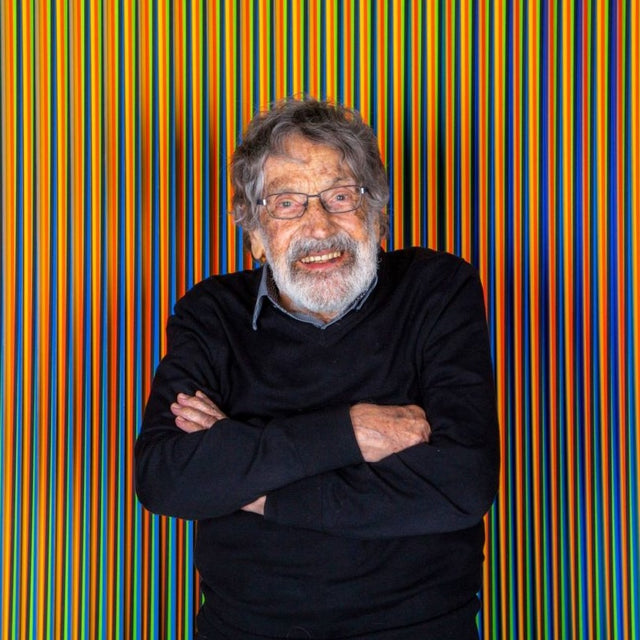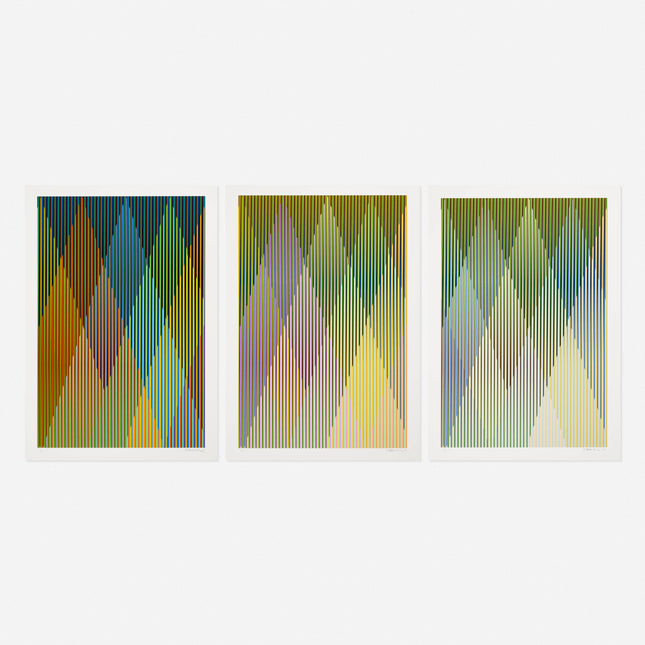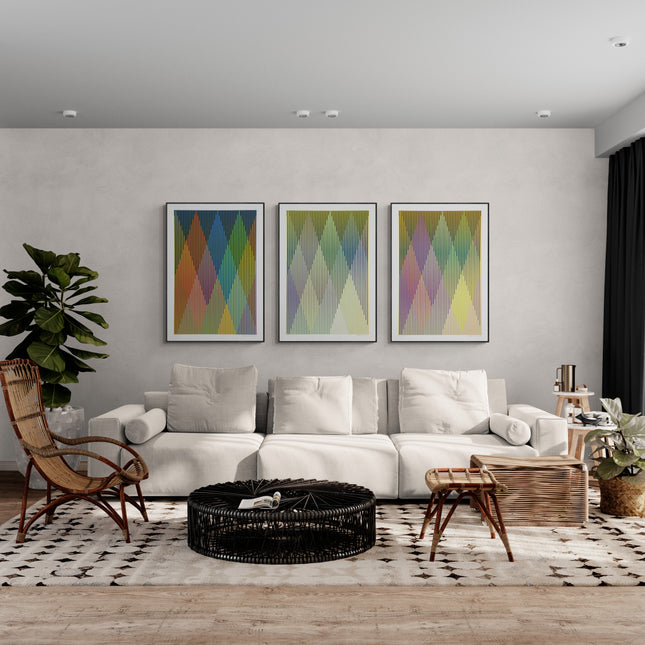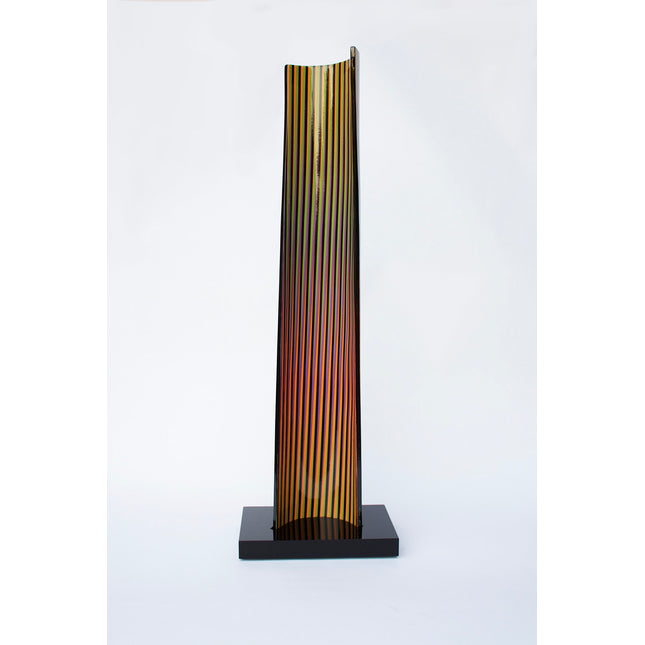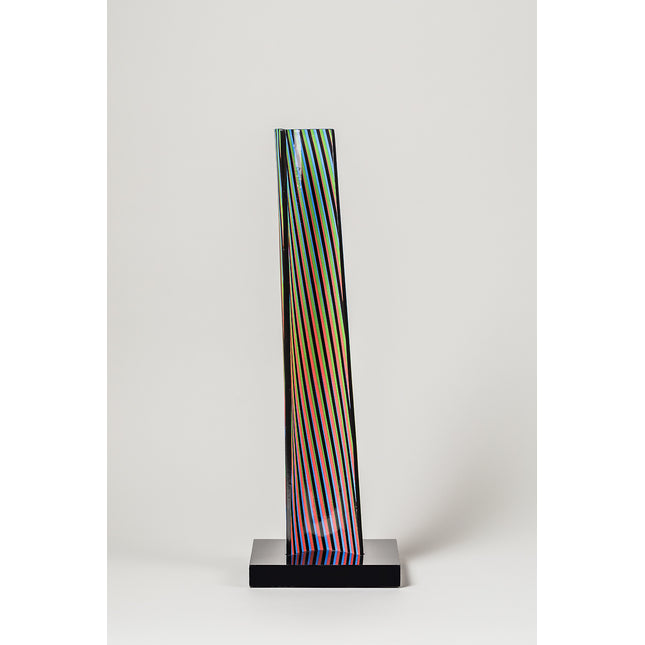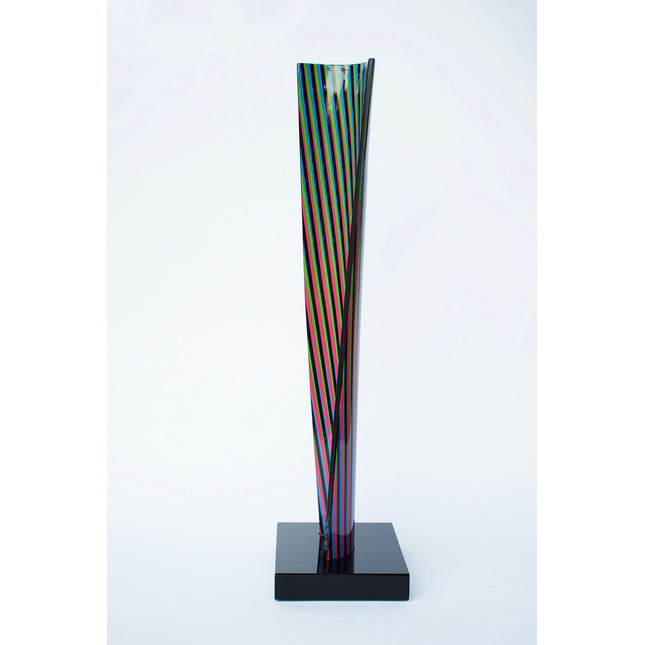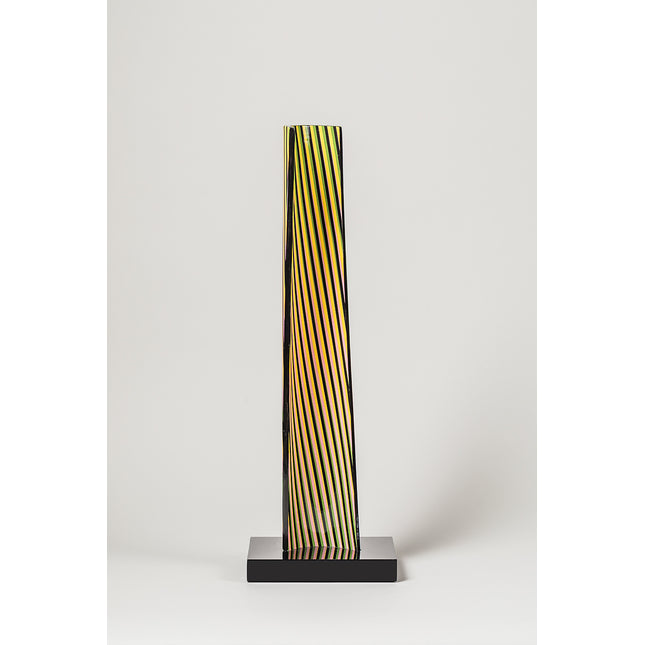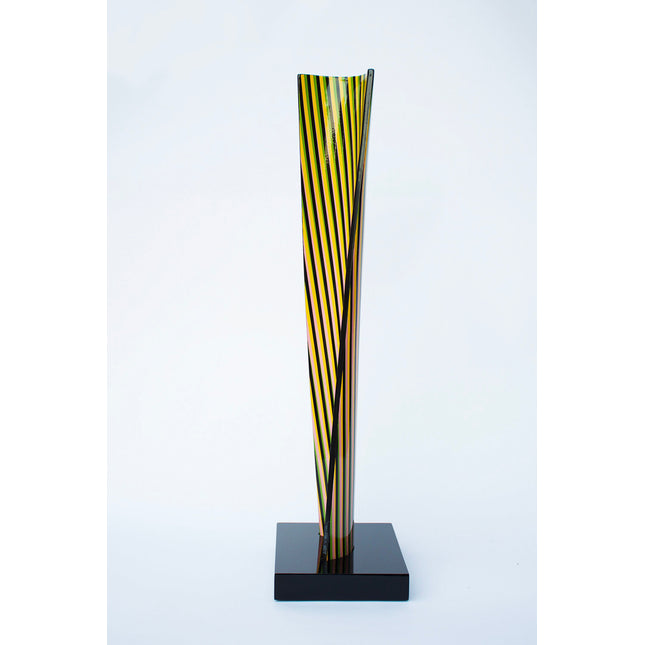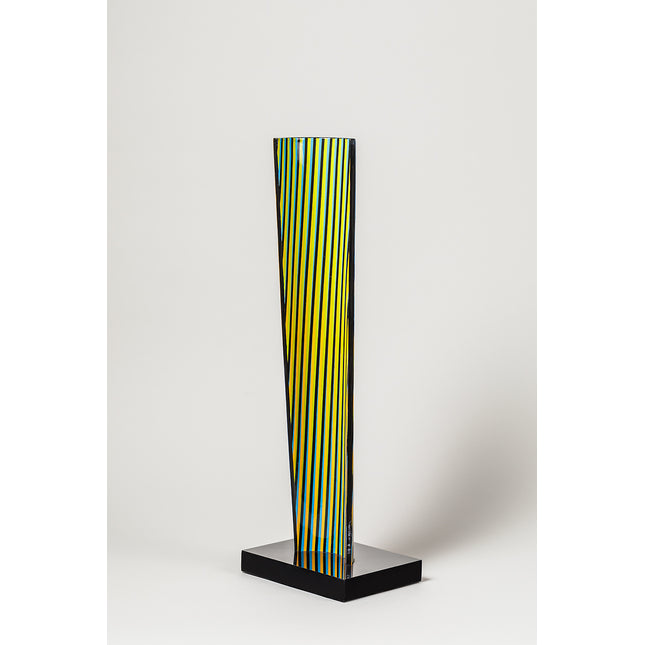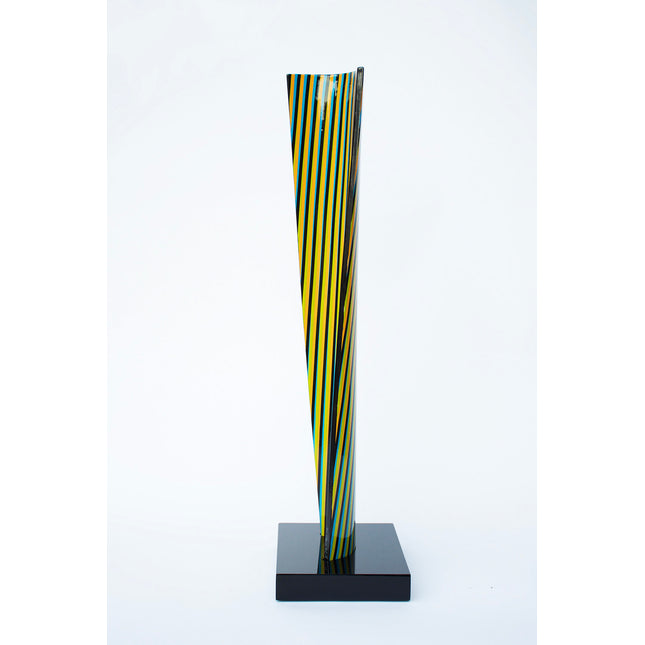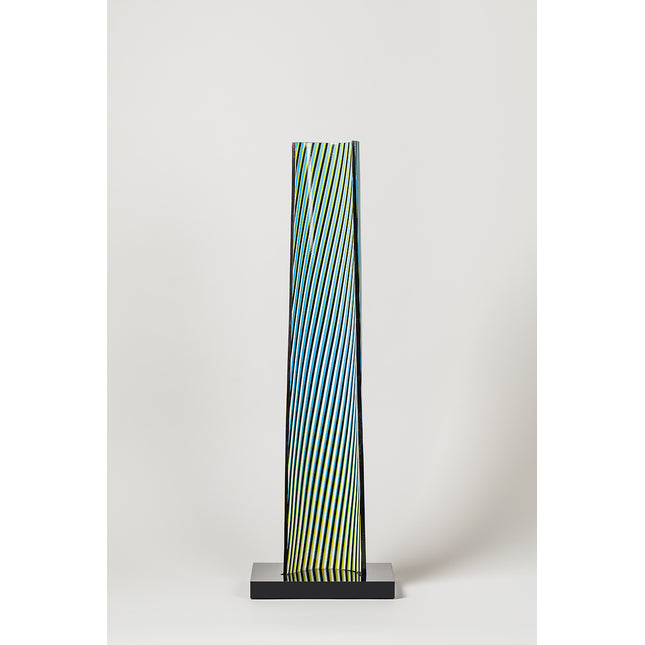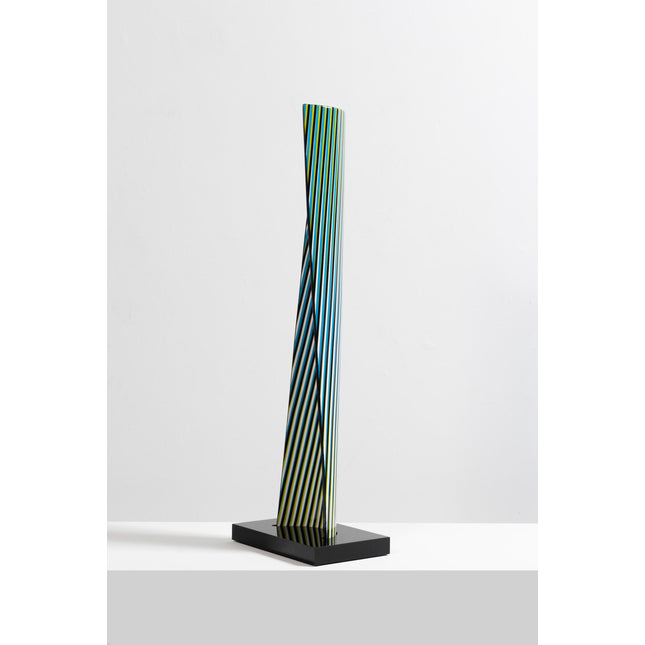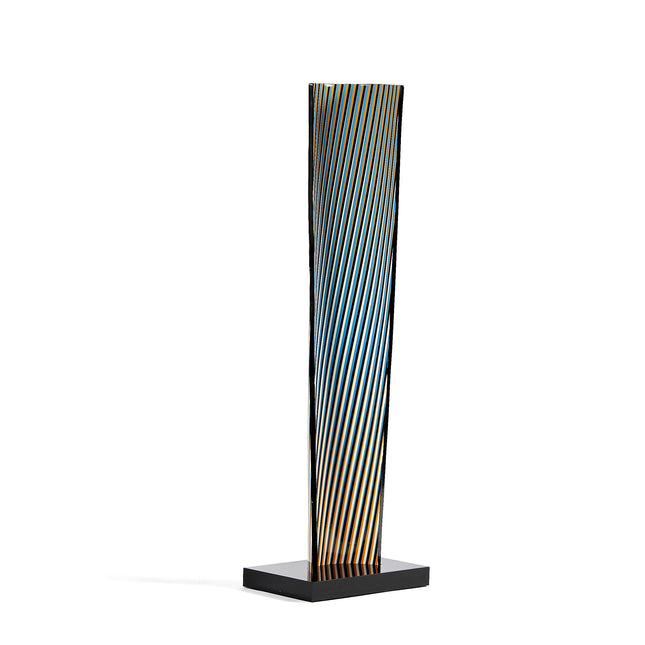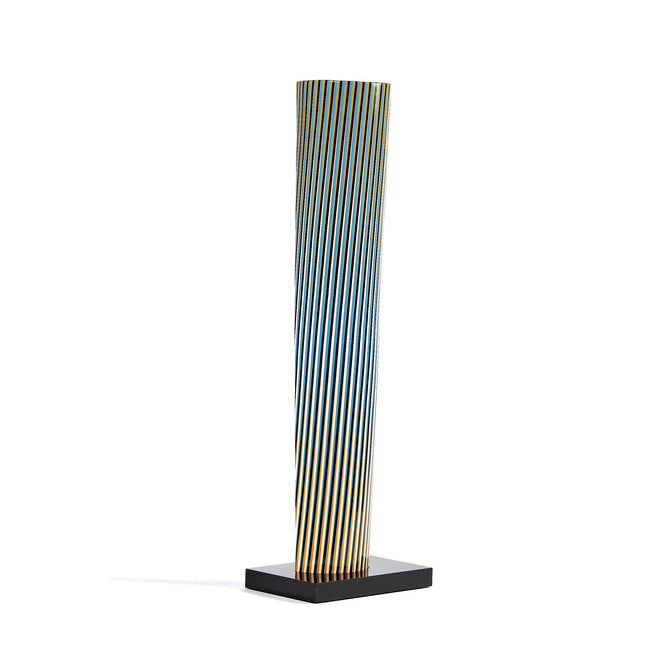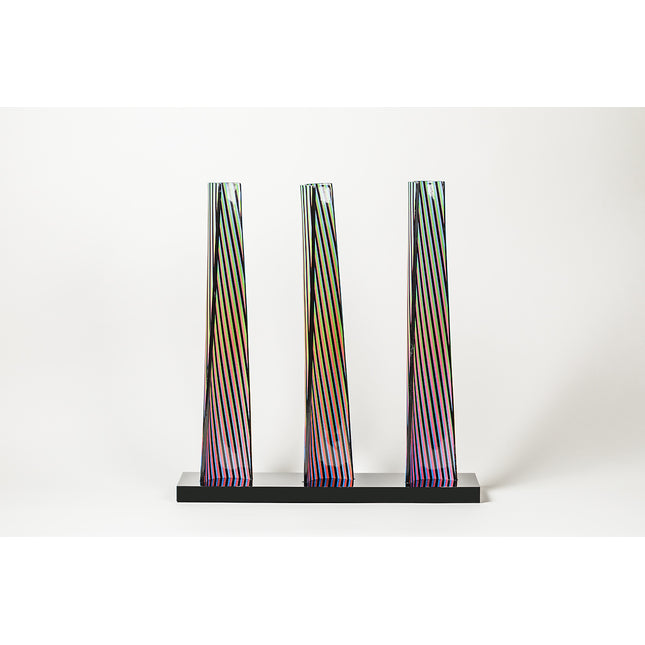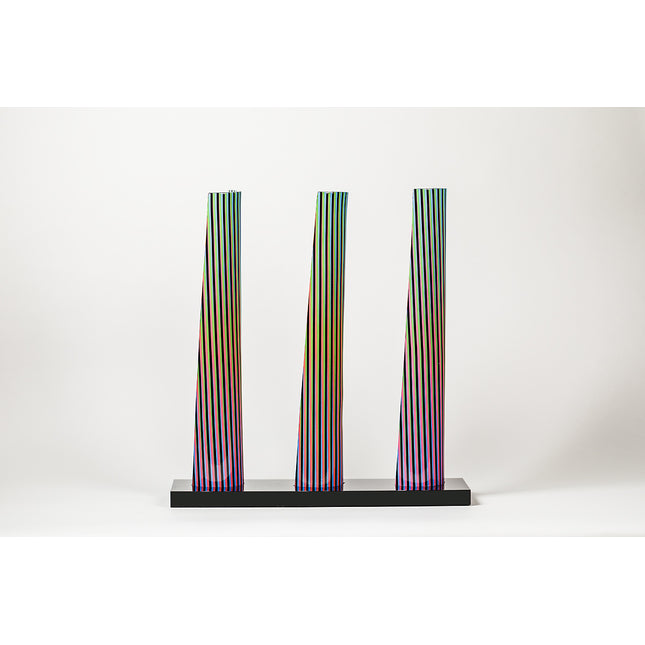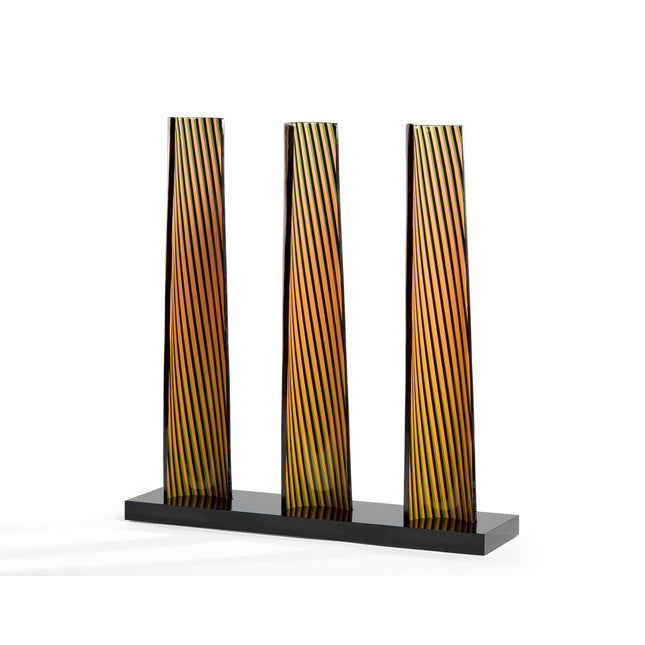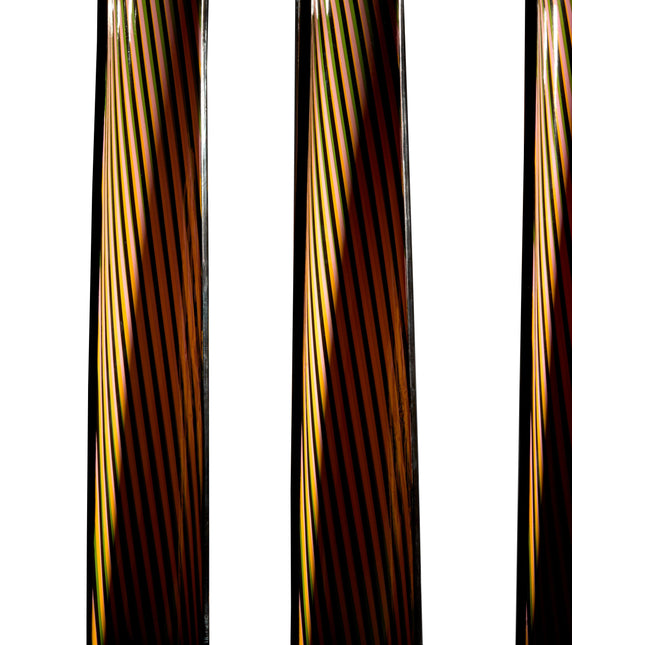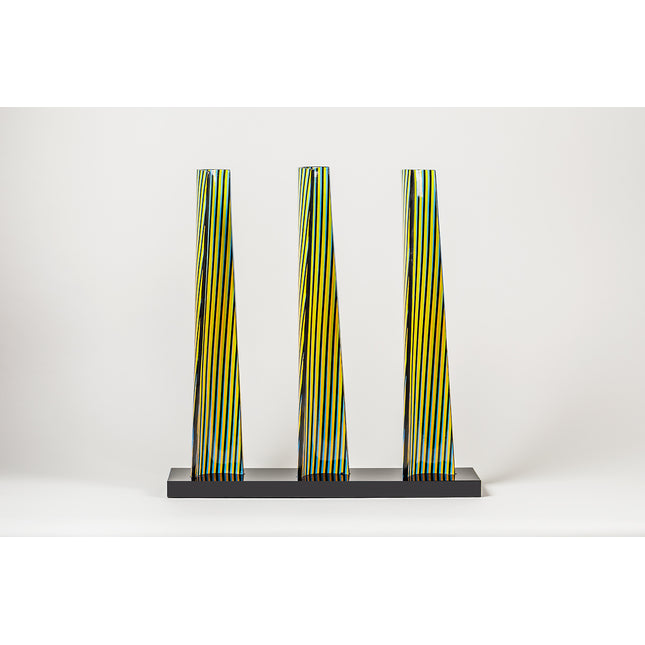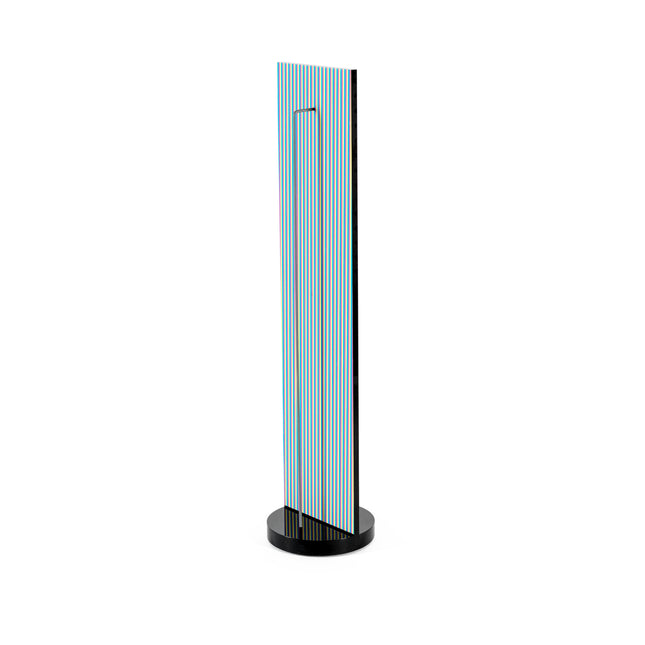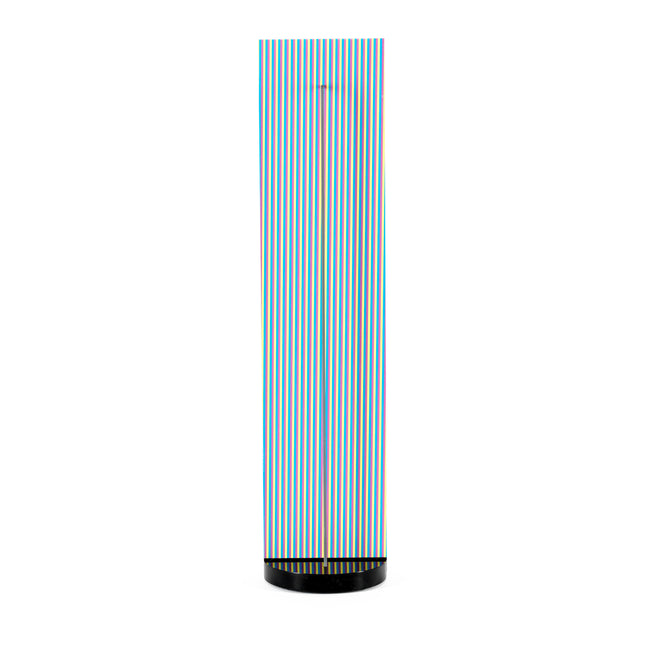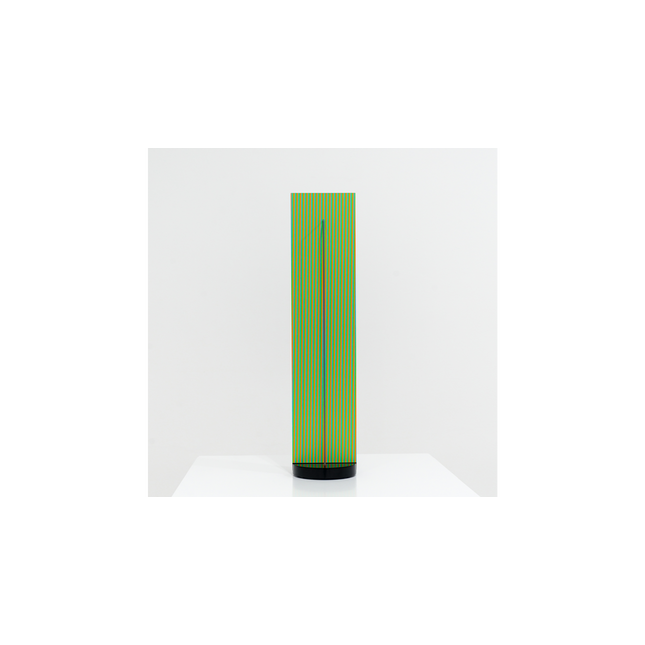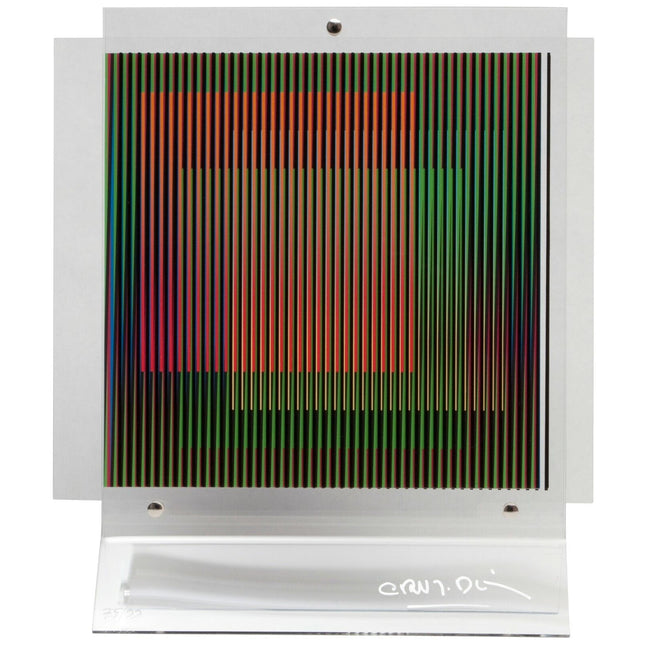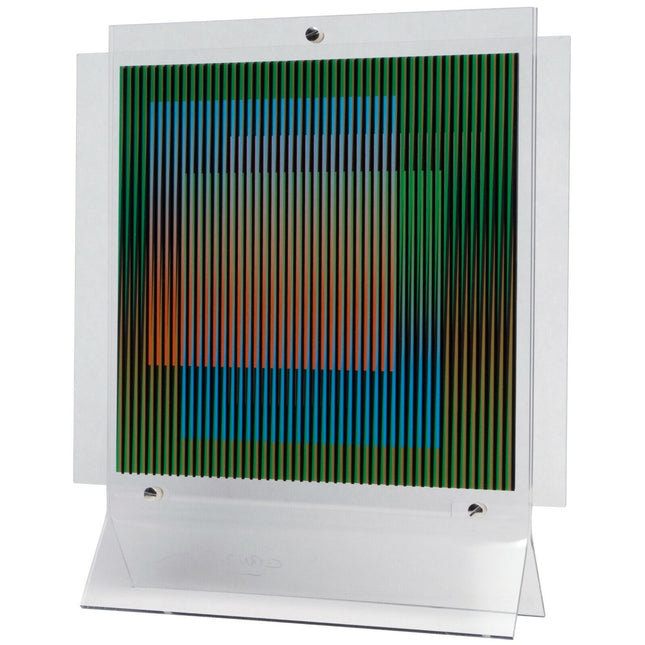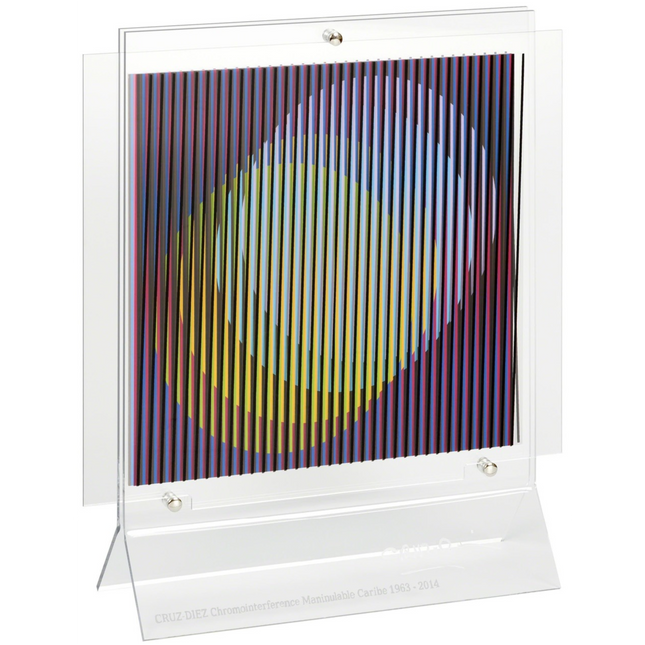Carlos Cruz-Diez (1923-2019) was an influential Venezuelan-French artist who played a pivotal role in the development of kinetic and optical art. Born on August 17, 1923 in Caracas, Venezuela, Cruz-Diez became one of the leading exponents of the artistic current known as Op Art and left a lasting legacy in the exploration of visual perception and color.
After studying at the School of Plastic and Applied Arts in Caracas and working as a graphic and advertising designer, Cruz-Diez moved to Paris in 1955. In the French capital, he joined a circle of artists experimenting with movement and optical illusion. Throughout his career, he was noted for his focus on the interaction of color and the viewer, and his works often involved the active participation of the viewer.
Cruz-Diez is known for several iconic series, including "Physichromie," which consists of colored panels that visually change as the viewer moves, and "Cromointerferencia," where he uses colored polycarbonate sheets to create captivating visual effects. These works explore the idea that color is not an intrinsic property of objects, but a perceptual construct that varies according to the environment and the viewer.
Throughout his career, Cruz-Diez received numerous awards and recognitions, including the Order of Arts and Letters of France and the National Prize of Plastic Arts of Venezuela. His work was exhibited in museums and galleries around the world, and his influence has spread to generations of artists interested in optics and visual perception.
Carlos Cruz-Diez passed away on July 27, 2019 in Paris, but his legacy lives on as a fundamental contribution to contemporary art and to the understanding of how we perceive and experience color in the world around us. His work remains a source of inspiration and a point of reference for artists and art lovers around the world.
